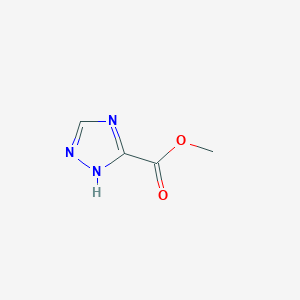-
Categories
-
Pharmaceutical Intermediates
-
Active Pharmaceutical Ingredients
-
Food Additives
- Industrial Coatings
- Agrochemicals
- Dyes and Pigments
- Surfactant
- Flavors and Fragrances
- Chemical Reagents
- Catalyst and Auxiliary
- Natural Products
- Inorganic Chemistry
-
Organic Chemistry
-
Biochemical Engineering
- Analytical Chemistry
- Cosmetic Ingredient
-
Pharmaceutical Intermediates
Promotion
ECHEMI Mall
Wholesale
Weekly Price
Exhibition
News
-
Trade Service
Most scholars in the academic circle believe that the legislative process of "Human Genetic Resources Management" in China is divided into four stages
.
The first stage is before 1996; the second stage is from 1996-2012; the third stage is the stage of human genetic resources management regulations (2012-2018); the fourth stage is from 2018 to present
On March 22, in order to implement the "Regulations of the People's Republic of China on the Administration of Human Genetic Resources" and ensure the implementation of various regulations, the Ministry of Science and Technology researched and drafted the "Implementation Rules for the Regulations on the Administration of Human Genetic Resources (Draft for Comment)", which was publicly solicited from the public.
opinion
.
As early as March 4, the China Human Genetic Resources Management Office of the Ministry of Science and Technology formulated the "FAQs on Human Genetic Resources Management" and released it in response to the common questions that applicants consulted when handling the administrative approval and filing of human genetic resources
.
The intensive publication of human genetic resources management rules and questions and answers in March is enough to show that the Ministry of Science and Technology attaches great importance to the supervision of human genetics
.
With the rapid development of gene sequencing technology and information technology, the research and utilization of human genetic resources has become a key way to understand and control life
.
At least 60 countries and regions around the world have adopted legislation or formulated guidelines to regulate human genetic resources activities
.
Developed countries have generally established relatively complete human genetic resources management systems.
Compared with the protection and management of human genetic resources in developing countries, developed countries pay more attention to the utilization and management of human genetic resources
.
Due to the differences in the development status of biotechnology and the rule of law in different periods, coupled with the impact of major human genetic resources security and biotechnology events at home and abroad, China's human genetic resources security legislation presents the characteristics of dynamic evolution, and the legislative side at different stages Emphasis varies
.
The announcement of the implementation rules means that pharmaceutical legal professionals need to keep abreast of the direction of supervision, update their knowledge, and even speak out for their companies and write suggestions within the time limit for soliciting opinions
.
In order to let more medical and legal practitioners have a clear understanding of the "Implementation Rules for the Regulations on the Management of Human Genetic Resources (Draft for Comment)", we cooperated with the Weijieyao app and invited Haiwen Institute Wu at 8 pm next Tuesday (March 29).
Lawyer Ting interprets the rules online
.
On the eve of the live broadcast, "E-Pharmaceutical Manager Compliance" will first talk to you about the legislative evolution of "Human Genetic Resources Management"
.
01.
The beginning of human genetic resources management (before 1996)
Since the 1980s, access to genetic resources and benefit-sharing have become the focus of attention of the international community
.
After a long period of consultation and negotiation, the 1992 Convention on Biological Diversity (hereinafter referred to as the "CBD Convention") was formally adopted and came into effect on December 29, 1993
.
In the section on genetic resources, the Convention establishes the principle of fair and reasonable sharing of the benefits of genetic resources, which is the first public discussion of genetic resources in the world
Although the CBD Convention on genetic resources does not cover human genetic resources, in a series of related international documents such as the Universal Declaration on Human Rights on the Human Genome, a broad consensus has been reached on the recognition that the human genome is the common heritage of mankind , China actively participated in the meeting and discussed consensus, laying a solid foundation for China's human genetic resources management system
.
02.
Legislative stage of human genetic resources management (1996-2012)
In 1996, Harvard University in the United States carried out the collection of genetic samples related to asthma, hypertension, obesity, diabetes, osteoporosis and other diseases for the purpose of "experimental research" in the Dabie Mountains of China
.
Thousands of people have undergone "physical examinations", and some people have had blood samples taken twice or even multiple times, but they have no idea of the real purpose of the collectors, let alone how the blood samples of themselves and their families will be used and processed.
In this "experiment", as many as 16,400 asthma genetic samples were passed to Harvard University alone, and genetic samples from 500 families were handed over to Millennium Pharmaceuticals, Inc.
isogenic studies
.
This incident aroused great attention in China on human genetic resources including genetic information, and became the direct cause of the birth of China's human genetic resources management system
.
On June 10, 1998, the General Office of the State Council officially issued the Interim Measures for the Administration of Human Genetic Resources (hereinafter referred to as the "Interim Measures")
.
The main goals of the "Interim Measures" are to effectively protect China's human genetic resources (especially human genetic resource materials) from the outflow, to strengthen the research and development of human genetic technology while ensuring safety, and to promote international cooperation on the basis of equality and mutual benefit.
with exchange
.
The "Interim Measures" consists of 6 chapters and 26 articles, which mainly stipulate the sampling, collection, research, development, trade or export of human genetic resources outside the People's Republic of China and other activities within the territory of the People's Republic of China.
In general, the Interim Measures provide relatively basic protection for international cooperation in scientific research in the field of genetic resources in China, and play a positive role in the protection and utilization of human genetic resources in China
.
03.
Regulations on the management of human genetic resources (2012-2018)
Before 2012, China's human genetic resources declaration was not very enthusiastic.
With the rapid development of genetic technology, in order to better adapt to the development and changes of the times, the Ministry of Science and Technology issued the "Human Genetic Resources Management Regulations (Draft for Comment)" in 2012.
”, the protection of genetic resources is gradually refined and more professional, but no breakthrough has been made in key issues such as the utilization of genetic resources such as genetic information, so it has not been approved
.
In 2012, the State Council changed the management of human genetic resources, which was originally jointly responsible by the Ministry of Science and Technology and the Ministry of Health, to the Ministry of Science and Technology
.
In 2015, the approval of "international cooperation projects involving human genetic resources" was changed to "approval for collection, collection, sale, export, and exit of human genetic resources" with the approval of the State Council
.
In 2015, the Ministry of Science and Technology issued the "Guidelines for Administrative Licensing Services for the Collection, Collection, Trade, Export, and Exit of Human Genetic Resources", which clearly stipulated the scope of application, acceptance agencies, and required conditions of this matter
.
In January 2016, the Ministry of Science and Technology submitted the "Regulations on the Administration of Human Genetic Resources (Draft for Review)" to the State Council, and repeatedly solicited opinions from relevant departments, local governments, scientific research institutions, enterprises, experts and scholars, and the public.
The amendments formed the Regulations of the People's Republic of China on the Administration of Human Genetic Resources (Draft)
.
04.
Biosafety legislation stage (2018 to present)
Several incidents between 2015 and 2018 exposed the imminence of biosafety legislation, with the Ministry of Science and Technology publishing six administrative penalties for violating regulations governing human genetic resources
.
In order to deal with the problems brought about by the development of cutting-edge science and technology, China's first "Biosafety Law (Draft)" in the sense of the Basic Law was reviewed by the Standing Committee of the National People's Congress on October 21, 2019, which has important implications for China's biosafety legislation.
It is of great significance, marking that China has entered the legislative stage of the Basic Law of Biosafety
.
By interpreting the specific systems stipulated in the draft, it can be seen that the draft is a systematic summary of China's biosafety-related laws and regulations.
Key links such as major emerging infectious diseases, animal and plant epidemic prevention and control, biotechnology research, development and application safety, laboratory biosafety, human genetic resources and biological resource safety, bioterrorism and biological weapons threats are regulated
.
However, in view of the frontier and complex nature of biosafety issues, the draft inevitably has various disputes, such as whether the structure and method are reasonable, whether the basic principles are appropriate, whether the interests of all parties are considered and balanced, whether the specific system is reasonable and operability,
etc.
On October 17, 2020, after a series of revisions, the "Biosafety Law of the People's Republic of China" with the main goal of improving the biosafety risk prevention and control system and mechanism and focusing on improving the national biosafety governance capacity was reviewed and approved.
A basic, comprehensive, systematic and overarching law has been established
.
A basic, comprehensive, systematic and overarching law has been established
.
In terms of the safety protection of human genetic resources, the Biosafety Law, which will be implemented from April 15, 2021, raises the main content of the Regulations of the People's Republic of China on the Administration of Human Genetic Resources to the legal level, but does not implement its core system Make adjustments and changes
The Personal Information Protection Law and the Data Security Law, which have been promulgated successively, also involve the protection of human genetic resources information
The Criminal Law Amendment (11) (hereinafter referred to as "Criminal Amendment (11)"), which came into effect on March 1, 2021, will illegally collect China's human genetic resources or illegally, transport, mail, or carry China's human genetic resources materials.
Recently, the Ministry of Science and Technology issued a notice on the public solicitation of opinions on the Implementation Rules for the Regulations on the Administration of Human Genetic Resources (Draft for Comments) (hereinafter referred to as the "Implementation Rules")
05.
The above are the four stages of China's "Human Genetic Resources Management" legislation
The development and application of informatization features, human genetic resources technology, and artificial intelligence products under the knowledge economy model are still in the initial stage, and there will be faster development in the future
From the legislative evolution of human genetic resources management, it can be seen that the state has a forward-looking consciousness from the beginning, and through the legislative, administrative and judicial processes, transmits clear values and prudent positions, so as to establish the correct development direction, enterprises and social capital in a timely manner Understanding the purpose of legislation and the direction of supervision allows enterprises to make scientific decisions, and for society, it will reduce and reduce social costs
.







